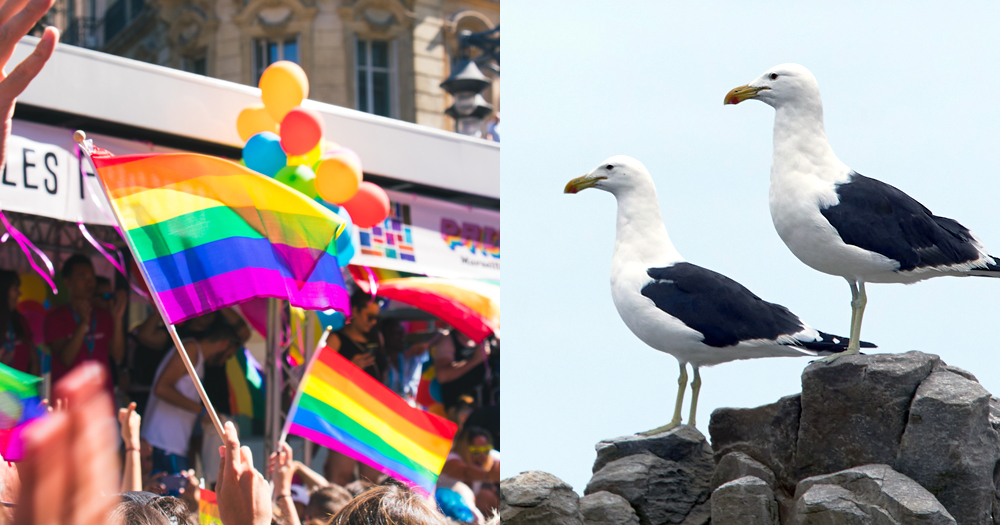When we think of seagulls, the image which comes to mind is of chip stealing, beach terrorising, eternally hungry winged beasts; what we don’t think is how they may have paved the way for the LGBT community’s proof that we belong in nature.
Back in 1972, a mere three years after the Stonewall Riots, homosexuality was still very much misunderstood. Cue two scientists, Oceanographer Molly Warner-Hunt and partner George Hunt. Off the coast of Santa Barbara, California, the pair were researching the behaviour of Western Gulls when Molly made a discovery: more eggs than one female seagull could produce in one day were appearing in the same nest. Intrigued, they changed the direction of the study to find out what was causing this.
Over the next 18 months, they discovered an acting mating pair of female seagulls, sharing a nest and raising young together. To their minds, this was the first instance of this behaviour discovered in a wild habitat, and as a result, they published their findings in an international scientific journal (which you can request to read here).
They had no idea of the response they would receive. They received calls from many major publications including The New York Times, The London Times, even a newspaper in Australia! However, with this attention came some unsavoury opinions from the general public who did not understand homosexuality and felt that it was against the will of God. This angry mob even attempted to influence US Congress to stop the funding for the couple’s research.
Fortunately for the Hunts, in response to their findings farmers began to write to them regarding their own experiences with mother nature; the general consensus was that most farm animals actually exhibited same-sex pairings at some point.
The impact this had was astronomical. Suddenly, any argument that homosexuality was unnatural and against God became opposed by the fact that animals, in fact, could be homosexual too. “The homosexual pairing has very little to do with morality, as far as the gulls are concerned” Molly states.
The couple received much praise and thanks for their bravery from the LGBT+ community in the form of letters, postcards and phone calls. Their legacy spanned as far as the 90’s when a Los Angeles theatre staged a play entitled Supernormal Clutches – the term Molly uses in her journal entry to describe the same-sex seagulls’ quantitative egg laying ability.
“The best you can hope for in science,” says George, “is that a piece of work is used by other scientists, and a really big bonus is if it makes a difference to the people of a nation that’s supported it.”
As the University of Oslo count of homosexual behaviour in animals now stands at over 1500 different species, it can be said that their study has made a very big difference indeed.
So, next time we see a seagull, let’s not bemoan them the odd chip! They might just have a supernormal clutch to feed back home.
© 2019 GCN (Gay Community News). All rights reserved.
Support GCN
GCN is a free, vital resource for Ireland’s LGBTQ+ community since 1988.
GCN is a trading name of National LGBT Federation CLG, a registered charity - Charity Number: 20034580.
GCN relies on the generous support of the community and allies to sustain the crucial work that we do. Producing GCN is costly, and, in an industry which has been hugely impacted by rising costs, we need your support to help sustain and grow this vital resource.
Supporting GCN for as little as €1.99 per month will help us continue our work as Ireland’s free, independent LGBTQ+ media.
